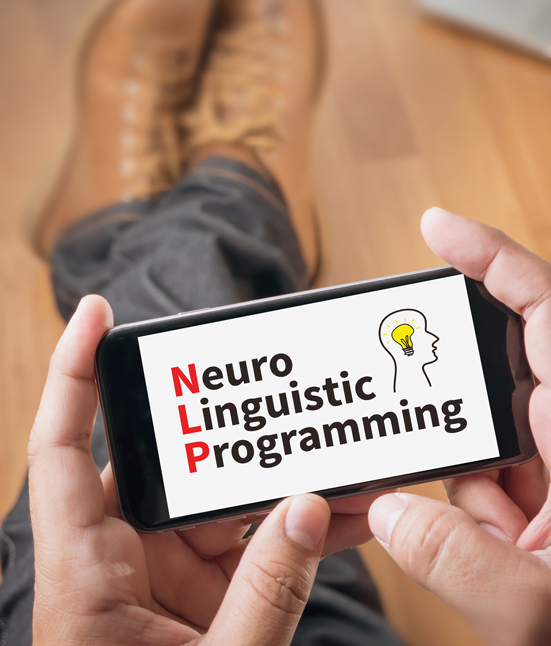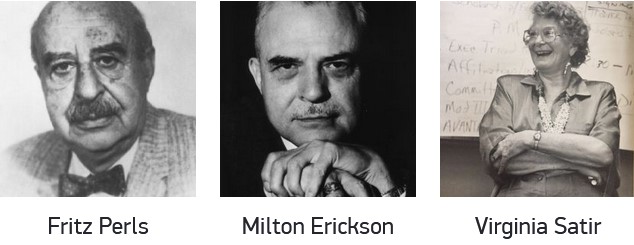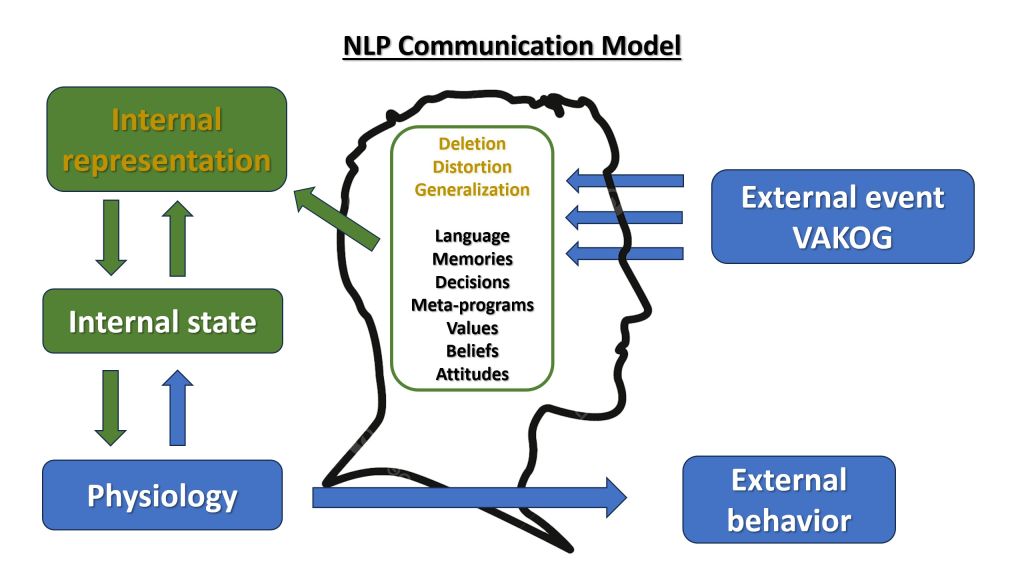Neuro-Linguistic Programming
Unlock Your Potential: Discover Neuro-Linguistic Programming (NLP)
Have you ever wondered why some people seem effortlessly persuasive, connect with others deeply, or overcome challenges with remarkable resilience? Neuro-Linguistic Programming (NLP) offers a powerful framework for understanding and replicating these patterns of excellence. It’s a practical approach to communication, personal development, and behavior change, providing you with tools and techniques to shape your thoughts, actions, and interactions with the world.
Neuro-Linguistic Programming (NLP) is a practical and powerful approach to understanding and influencing human behavior and communication. It focuses on the connection between our neurological processes (“neuro”), our language (“linguistic”), and our behavioral patterns (“programming”). By understanding how these three aspects interact, NLP provides tools and techniques for personal growth, improved communication, and achieving desired outcomes.


The Genesis of NLP: Modeling Excellence
NLP emerged in the 1970s through the groundbreaking work of Richard Bandler, a mathematician and gestalt therapist, and John Grinder, a linguist. Their initial research involved studying and modeling the exceptional communication skills of highly successful therapists like Fritz Perls (the founder of Gestalt therapy), Virginia Satir (a renowned family therapist), and the influential hypnotherapist Milton H. Erickson.
Bandler and Grinder didn’t just analyze what these experts did, but also how they did it – the specific language patterns, behavioral cues, and cognitive strategies they employed to achieve outstanding results with their clients. By identifying these underlying structures, they developed a set of models and techniques that could be learned and applied by others to enhance their own effectiveness. This process of “modeling excellence” forms the core of NLP.

Language shapes your mind — NLP shows you how to deliberately reshape it.
The NLP Communication Model: Mapping Our Inner and Outer Worlds
NLP proposes that we each create internal “maps” of the world based on our sensory experiences (visual, auditory, kinesthetic, gustatory, olfactory) and how we process this information through our individual filters (beliefs, values, experiences, language). This internal representation shapes how we perceive, interpret, and react to events.
The NLP communication model highlights several key components:
- The External Event: Something happens in the world around us.
- Sensory Input: We take in information through our senses. However, we can only process a fraction of the available stimuli.
- Neurological Filters: Our beliefs, values, past experiences, language, and assumptions act as filters, determining which information we pay attention to and how we interpret it.
- Internal Representation: The filtered information is then processed and stored as internal images, sounds, feelings, tastes, and smells, forming our unique mental map of the event.
- State: Our internal representation influences our emotional and physiological state (e.g., happy, sad, confident, anxious).
- Behavior: Our state, in turn, influences our actions and communication.
Understanding this model empowers us to recognize how our internal maps can sometimes limit us and provides tools to consciously shift our representations and states to achieve more desirable outcomes.

The Power of Language: Unveiling Linguistic Patterns in NLP
Language is a fundamental aspect of NLP. Bandler and Grinder meticulously studied the language patterns used by their expert models, identifying specific structures that consistently led to powerful communication and therapeutic breakthroughs. Some key linguistic patterns in NLP include:
- The Meta Model: A set of questions designed to clarify vague or distorted language, bringing unconscious assumptions and generalizations to the surface. By asking precise questions, we can uncover the deeper meaning behind someone’s words and identify limiting beliefs. For example, instead of accepting “I can’t do it,” a Meta Model question might be “What stops you specifically?”
- The Milton Model: Inspired by the indirect and artfully vague language patterns of Milton Erickson, this model utilizes hypnotic language to bypass the conscious mind and communicate directly with the unconscious. It employs techniques like metaphor, suggestion, and ambiguity to facilitate change at a deeper level.
- Anchoring: This technique involves associating a specific sensory experience (e.g., a touch, a word, a visual image) with a particular emotional state. Once an anchor is established, it can be consciously triggered toAccess desired states like confidence or calm.
- Reframing: This involves changing the way we perceive an event or situation by shifting its context or meaning. By finding a different frame, we can alter our emotional response and open up new possibilities.
These linguistic tools provide practical ways to influence our own thinking and communication, as well as understand and connect with others more effectively.
NLP in Action: Diverse Applications
The versatility of NLP has led to its application in a wide range of fields:
- Therapy and Personal Development: NLP offers powerful techniques for addressing anxiety, phobias, limiting beliefs, trauma, and other emotional challenges. It empowers individuals to gain greater self-awareness, manage their emotions, and create lasting positive change. By understanding and shifting internal representations and emotional states, individuals can overcome obstacles and achieve their personal goals.
- Sales and Business: In the world of sales and business, NLP provides invaluable tools for building rapport, understanding client needs, influencing decision-making, and improving negotiation skills. By mastering communication patterns and understanding how others process information, professionals can enhance their persuasive abilities and build stronger relationships.
- Forensic Contexts: While perhaps less widely known, NLP principles can be applied in forensic settings. Understanding communication patterns and detecting inconsistencies in language can be valuable in interviewing witnesses or suspects. Analyzing linguistic cues might offer insights into deception or underlying thought processes. However, it’s crucial to note that NLP is a tool for understanding communication and should be used ethically and responsibly, not as a definitive lie detector.
Frequently Asked Questions
What exactly is Neuro-Linguistic Programming?
Neuro-Linguistic Programming (NLP) is a practical and powerful approach to understanding and influencing human behavior and communication. It focuses on the connection between our neurological processes (“neuro”), our language (“linguistic”), and our behavioral patterns (“programming”). By understanding how these three aspects interact, NLP provides tools and techniques for personal growth, improved communication, and achieving desired outcomes.
How was NLP developed?
NLP was developed in the 1970s by Richard Bandler and John Grinder, who studied the communication patterns of highly successful therapists like Fritz Perls, Virginia Satir, and Milton H. Erickson. They identified the specific language and behavioral strategies these experts used to achieve exceptional results and modeled these patterns into a learnable framework.
What is the NLP communication model?
The NLP communication model describes how we process information from the external world through our senses and filters (beliefs, values, experiences, language) to create internal representations. These internal maps influence our emotional state and, consequently, our behavior and communication. Understanding this model helps us recognize how our perceptions shape our reality and provides ways to create more helpful internal maps.
What are some key linguistic patterns in NLP?
Key linguistic patterns in NLP include the Meta Model (for clarifying language), the Milton Model (for using indirect suggestion), anchoring (associating states with triggers), and reframing (changing the meaning of events). These tools offer practical ways to enhance communication and influence thinking.
What kind of benefits can I expect to gain from NLP training?
NLP training gives you a strong toolbox of skills for communication and behavioral change. You can look forward to improving your capacity to relate to and establish rapport with others, to be a more convincing speaker, to acquire more self-awareness and emotional control, to conquer limiting beliefs and habits, and to reach your personal and professional objectives with more ease and efficiency.
How can NLP training enhance my skills in areas like therapy, sales, or forensic interviewing?
NLP training offers particular, useful strategies relevant in many different fields. For those of you who are therapists, NLP will teach you strong tools to help clients change and knowledge of their inner world. People in sales can harvest persuasive communication, knowledge of customer needs, and rapport-building. In the demanding context of forensic interviews, NLP will help you develop abilities in language pattern analysis and trust-building to elicit more complete information. In these and many other areas depending on good communication and knowledge of human behavior, NLP training provides a pragmatic advantage.
What makes NLP training different from other communication or personal development programs?
NLP training emphasizes the how of excellence. It offers particular, learnable models and tools based on observing very successful people. Unlike more theoretical methods, NLP provides practical, actionable tools you can use right away to achieve noticeable changes in your communication, influence, and personal effectiveness. It’s about building a useful skill set rather than just grasping ideas.
Why does part of academia consider NLP a pseudoscience?
It is crucial to understand that NLP is rather a set of skills and models for efficient communication and behavior change than a rigid protocol. The first difficulty to overcome is that skill is fundamentally difficult to be quantified and measured. What makes a two-Michelin stars chef… a two-Michelin stars chef? There is no particular answer other than…the taste. Even if he gave you the recipe, you wouldn’t be able to adequately replicate a result worthy of two Michelin stars.
The second difficulty is that proficiency in NLP, like any other skill -such as playing a musical instrument or mastering a sport- calls for practice and constant honing. Thus, replicating its outcomes in controlled scientific experiments becomes difficult unless the researcher himself has acquired an adequate level of NLP skills. Often, the nuanced application of these skills by a trained professional determines the ability to initiate particular changes, making standardized replication challenging for those lacking that training. The value of NLP is in its practical use and the clear outcomes obtained by knowledgeable professionals.

